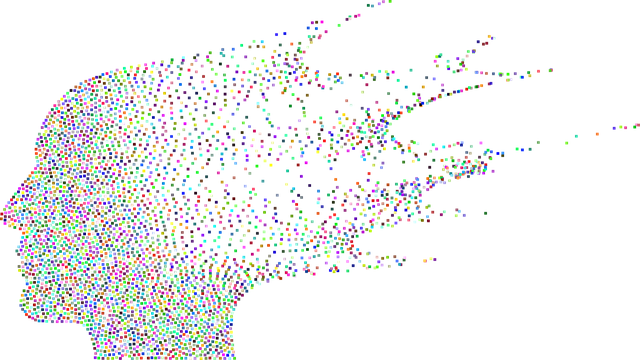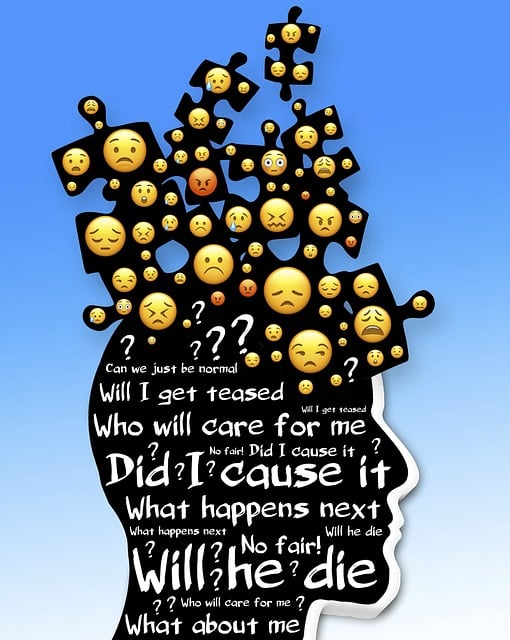Public awareness campaigns promoting Parker Anger Management Therapy play a pivotal role in educating communities about mental health and anger management. These campaigns employ diverse strategies, dispelling myths and encouraging positive behavioral changes through tailored exercises, cultural competency training, and community engagement. Targeting specific demographics and incorporating relatable themes enhances their impact. Compelling storytelling, combining traditional and digital media, along with partnerships, expands reach. Rigorous evaluation using analytics and surveys ensures effectiveness and guides improvements, ultimately fostering emotional wellness and resilient societies.
Public awareness campaigns play a pivotal role in shaping societal attitudes and behaviors, with significant impacts on various issues. This article delves into the strategic development of such campaigns, guiding professionals like Parker Anger Management Therapy experts. From understanding campaign roles and identifying target audiences to crafting compelling messages and choosing effective distribution channels, each step is crucial for success. Additionally, we explore evaluation metrics to measure the true impact of these initiatives.
- Understanding Public Awareness Campaigns: Their Role and Impact
- Identifying Target Audiences for Effective Campaign Strategies
- Crafting Compelling Messages: Content Creation for Impact
- Choosing the Right Channels: Distribution Methods for Maximum Reach
- Measuring Success: Evaluation Metrics for Public Awareness Campaigns
Understanding Public Awareness Campaigns: Their Role and Impact

Public awareness campaigns play a pivotal role in educating and engaging communities on various issues, including mental health and anger management. These initiatives are designed to bring attention to important topics, dispel misconceptions, and encourage positive behavioral changes. By utilizing diverse communication channels, such as social media, community events, and local partnerships, these campaigns can reach a wide audience and foster understanding.
For instance, consider the impact of a well-structured campaign promoting Parker Anger Management Therapy. Through Self-Awareness Exercises tailored for different demographics, individuals can learn to recognize and manage their emotions effectively. Healthcare Provider Cultural Competency Training ensures that professionals are equipped to address diverse patient needs, enhancing Emotional Well-being Promotion Techniques across various communities. Such campaigns not only raise awareness but also empower people to take control of their mental health, ultimately leading to more resilient and supportive societies.
Identifying Target Audiences for Effective Campaign Strategies

Identifying the target audience is a pivotal step in designing effective public awareness campaigns. By understanding the demographics, psychographics, and behaviors of your intended recipients, you can tailor messages that resonate deeply. For instance, a campaign focused on promoting Parker Anger Management Therapy would benefit from targeting individuals experiencing chronic anger issues, possibly young adults or those going through divorce proceedings. Incorporating strategies that address specific age groups’ challenges and preferences ensures higher engagement.
Additionally, incorporating themes like coping skills development, confidence boosting, and self-esteem improvement can make these campaigns more inclusive and impactful. Tailoring content to different audiences allows for a nuanced approach, enhancing the likelihood of successful outcomes. This precision in targeting is not just about demographics; it also involves understanding cultural nuances and personal struggles, ensuring that the campaign’s message is both relevant and compelling.
Crafting Compelling Messages: Content Creation for Impact

Crafting compelling messages is a crucial aspect of successful public awareness campaigns. When it comes to sensitive topics like Parker Anger Management Therapy, effective content creation involves more than just delivering facts. It requires storytelling that resonates with the target audience, using language and narratives that spark interest, empathy, and action. The key lies in balancing education with engagement, ensuring the message is accessible without losing its impact.
For instance, when addressing burnout prevention strategies for healthcare providers or conflict resolution techniques, the content should be tailored to address their unique challenges. Incorporating real-life examples and personal narratives from those who have benefited from these strategies can make a significant difference. By doing so, the campaign not only informs but also inspires, encouraging participants to take proactive steps towards improving their well-being and work-life balance. This approach aligns with the broader goal of creating sustainable change through impactful public awareness campaigns.
Choosing the Right Channels: Distribution Methods for Maximum Reach

Selecting the appropriate communication channels is a strategic step in designing successful public awareness campaigns. The goal is to reach the widest audience possible, ensuring that messages resonate with diverse communities. For instance, considering both traditional and digital media platforms can significantly enhance campaign effectiveness. Television and radio remain powerful tools, especially when targeting wider demographics or regions with limited internet access. Social media platforms, on the other hand, offer precise targeting options, allowing campaigns to focus on specific age groups, interests, or even geographic locations. This level of customization is particularly beneficial for niche topics like Parker Anger Management Therapy, where tailored messaging can improve engagement and comprehension.
Additionally, leveraging community-based organizations, local events, and partnerships with mental health professionals can significantly boost reach and impact. These methods foster trust and cultural sensitivity in mental healthcare practice, ensuring that the campaign aligns with the needs and values of diverse communities. Effective distribution methods also involve considering risk assessment for mental health professionals, as it ensures the safety and well-being of those involved in spreading awareness, especially when addressing sensitive issues like anger management.
Measuring Success: Evaluation Metrics for Public Awareness Campaigns

Evaluating the success of public awareness campaigns is paramount to understanding their impact and identifying areas for improvement. Metrics play a crucial role in measuring the effectiveness of initiatives aimed at raising awareness, such as Parker Anger Management Therapy or Mental Wellness Podcast Series Production. Key performance indicators (KPIs) can include the reach and engagement of campaign messages, with social media analytics providing valuable insights into online interactions and audience demographics.
For instance, tracking the number of shares, likes, and comments on campaign-related content can offer a glimpse into public interest and willingness to participate. Additionally, measuring changes in behavior or attitudes before and after the campaign is another effective evaluation method. This could involve surveying participants about their knowledge, attitudes, and practices related to the campaign’s focus, such as Social Skills Training. By employing these evaluation metrics, developers of Public Awareness Campaigns Development can ensure their initiatives are achieving desired outcomes and making a meaningful impact on target audiences.
Public awareness campaigns play a pivotal role in educating and influencing communities, as demonstrated by successful initiatives like Parker Anger Management Therapy. By understanding target audiences, crafting compelling messages, and utilizing the right distribution channels, these campaigns can significantly impact behavior change and social progress. Measuring success through evaluation metrics ensures that efforts are not only reaching but also resonating with the intended audience, fostering a more informed and engaged society.











